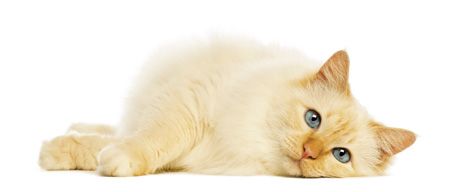Mirtazapine in cats: How much is too much?
A look at ideal dosing practices for this appetite stimulant in cats and what happens in cases of overdose.

Managing an anorectic cat is always a concern in private veterinary practice since cats often respond to the presence of illness by not eating. Cats that do not eat do not heal as quickly, and some will not recover at all. Several medications have been tried historically. One that has fairly recently come on the market, mirtazapine, has shown promise as a safe and effective alternative. But like many medications, it is not without limitations and adverse effects.
Outlining the ill effects
Mirtazapine is an antidepressant when used in people, but it possesses appetite-stimulating properties. Mirtazapine is now commonly used at a dose of 1.88 mg or 3.75 mg orally to stimulate appetite in anorectic cats. Side effects have been reported, and because the medication comes from the human side, veterinarians are left with few guidelines for dosing. This study aimed to better define adverse effects and the dosages associated with these adverse events.
The records of cats with reported mirtazapine exposure were obtained from the ASPCA Animal Poison Control Center from the years 2006 to 2011. The group consisted of 84 cats varying in age and breed. The most common side effect was vocalization; other signs included agitation, vomiting, ataxia, restlessness and tremors.
The dose most often associated with adverse effects was 15 mg; however, signs were reported with a range of doses. Most of the cases in the study were considered accidental ingestions, but almost 30% of the cats were given the dosage that the prescription called for. Some of the cats were given the prescribed amount yet at a more frequent dosing interval than recommended. One of the cats in the group was actually not prescribed the medication at all. The owner had it in the home, and it was given accidentally. A greater number of adverse effects were reported when cats were administered the 3.75-mg dose than when cats were administered the 1.88-mg dose.
Exam-room application
This study indicates that an appropriate starting oral dose for mirtazapine in cats may be 1.8 mg/cat instead of 3.75 mg/cat, and it is critically important to make sure cat owners know exactly how to dose and at what interval. The authors also recommend that to reduce the chances of accidental overdose, the 15-mg pills be divided into exact doses for clients before sending the prescription home with them. The study emphasizes the role of client education in this and all medication protocols.
Ferguson LE, McLean MK, Bates JA, et al. Mirtazapine toxicity in cats: retrospective study of 84 cases (2006-2011). J Feline Med Surg 2015. Epub ahead of print.
Link to abstract: http://www.ncbi.nlm.nih.gov/pubmed/26228539